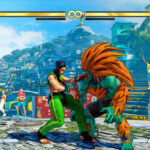The Wall Street Journal (WSJ) stands as a towering figure in global financial journalism. For decades, this newspaper has shaped the understanding of markets, economies, and business for millions of readers worldwide. In an era where media landscapes are constantly shifting due to mergers and digital transformations, the question of ownership becomes increasingly relevant. Understanding Who Owns The Wall Street Journal Newspaper reveals not only its corporate structure but also the forces that influence its journalistic direction and future. This article delves into the fascinating history of the WSJ’s ownership, tracing its roots from its founders to its current status under a media conglomerate.
The Founding and Early Vision of The Wall Street Journal
The story of the Wall Street Journal begins in 1889, a time of burgeoning industrial growth and financial speculation in the United States. It was conceived by three visionary individuals: Charles Dow, Edward Jones, and Charles Bergstresser. These pioneers aimed to provide in-depth financial news to investors, moving beyond simple stock tickers to offer insightful analysis and market commentary. Initially distributed as a daily afternoon news sheet delivered by messengers, the Journal quickly gained traction among the Wall Street community for its accurate and timely reporting. This early iteration laid the foundation for the WSJ’s enduring commitment to financial expertise and comprehensive business coverage.
:strip_icc()/charles_dow_375-5c6a8a24c9e77c0001b3a0fe.jpg)
The Barron Family Era: Stewardship and Growth
In 1902, a significant transition occurred when Clarence Barron, the founder of Barron’s Financial Weekly, acquired the Wall Street Journal. Barron, a prominent figure in financial publishing, brought his expertise and vision to the paper, further solidifying its reputation for authoritative financial reporting. Upon his death in 1928, ownership passed to the Bancroft family, marking the beginning of a long and stable period of stewardship. For over a century, the Bancroft family guided the Wall Street Journal, overseeing its growth into a national newspaper and its expansion into various media formats. This era was characterized by a commitment to journalistic integrity and a focus on long-term value, contributing significantly to the WSJ’s esteemed brand.
News Corporation Takes the Helm: The Murdoch Acquisition
The landscape shifted dramatically in 2007 when Rupert Murdoch’s News Corporation made a compelling takeover bid for Dow Jones & Company, the parent company of the Wall Street Journal. Initially met with resistance by the Bancroft family, the offer, valued at $5 billion or $60 per share, eventually proved too attractive to refuse. This acquisition ended the Bancroft family’s 105-year ownership and ushered in a new era under the media magnate Rupert Murdoch. The deal was particularly noteworthy given the challenging climate for the newspaper industry at the time, signaling Murdoch’s belief in the enduring value and prestige of the Wall Street Journal.
:strip_icc()/rupert_murdoch_375-5c6a8a8ac9e77c0001b3a108.jpg)
News Corp: A Global Media Empire
Understanding who owns the Wall Street Journal newspaper today requires examining News Corporation. Rupert Murdoch, born in Australia and inheriting a newspaper business in 1952, has built News Corp into a global media powerhouse. The conglomerate’s portfolio spans across various media sectors, including:
- Fox Corporation: A major player in television broadcasting.
- HarperCollins: One of the world’s largest publishing houses.
- The New York Post: A prominent New York City newspaper.
- The Sunday Times (U.K.): A leading British national newspaper.
- Sky News Australia: An Australian news channel.
This diverse portfolio illustrates the scale and reach of News Corp, highlighting the Wall Street Journal’s place within a vast network of media assets.
Navigating Controversy: The Phone Hacking Scandal
The acquisition by News Corp was not without its challenges. Shortly after the takeover, a significant phone-hacking scandal emerged, implicating journalists at British newspapers owned by Murdoch. While Murdoch denied direct involvement, the scandal led to the closure of News of the World and cast a shadow over News Corp’s ethical practices. This controversy prompted regret from some Bancroft family members regarding the sale and raised questions about the impact of concentrated media ownership on journalistic integrity.
The Wall Street Journal in the 21st Century: A Digital and Print Leader
Despite the evolving media landscape and ownership changes, the Wall Street Journal remains a highly influential and respected publication. It has successfully transitioned into the digital age, boasting a substantial online subscription base alongside its print circulation. Published six days a week, the WSJ provides in-depth coverage of finance, economics, politics, and global news, catering to professionals and informed readers seeking reliable and insightful analysis. Its consistent recognition with Pulitzer Prizes underscores its commitment to journalistic excellence.
Conclusion: The Legacy of Ownership and Journalistic Integrity
In conclusion, the question of who owns the Wall Street Journal newspaper leads to a rich history of ownership transitions, from its visionary founders to the Bancroft family’s century-long stewardship, and finally to its current place within Rupert Murdoch’s News Corporation. While ownership has evolved, the Wall Street Journal’s core mission of delivering high-quality financial journalism has endured. As part of a global media conglomerate, the WSJ navigates the complexities of the modern media world while striving to maintain its reputation for expertise, authoritativeness, and trustworthiness in reporting.

